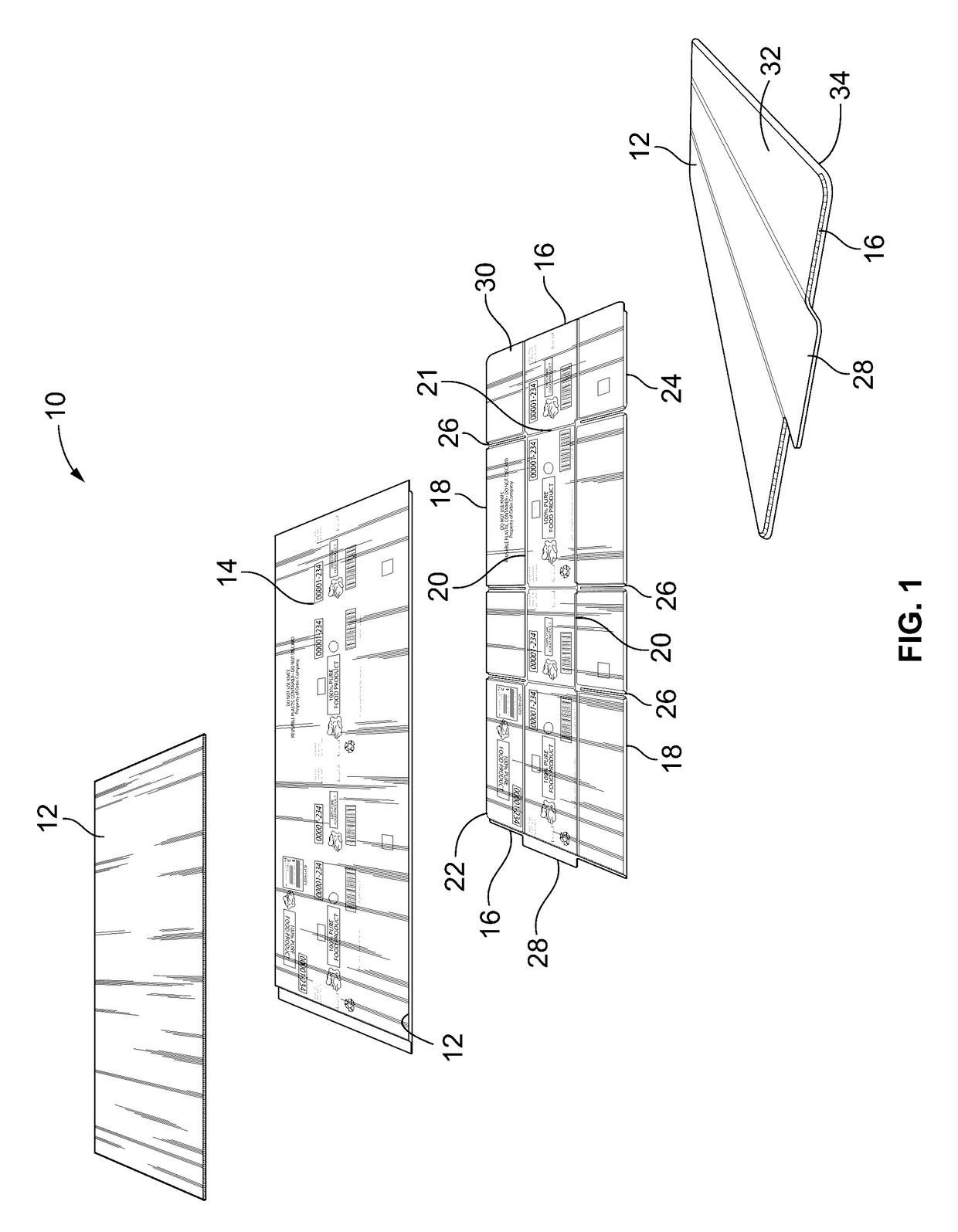Plastic corrugated container with ultrasonically formed score lines
a plastic corrugated container and ultrasonically formed technology, applied in the field of reusable plastic corrugated containers, can solve the problems of not being able to be re-used in the automated packaging lines designed to work with new, straight and flat boxes, and flaps becoming floppy or limp
- Summary
- Abstract
- Description
- Claims
- Application Information
AI Technical Summary
Benefits of technology
Problems solved by technology
Method used
Image
Examples
Embodiment Construction
[0101]While this invention is susceptible of embodiments in many different forms, there is shown in the drawings and will herein be described in detail preferred embodiments of the invention with the understanding that the present disclosure is to be considered as an exemplification of the principles of the invention and is not intended to limit the broad aspect of the invention to the embodiments illustrated.
[0102]FIG. 1 illustrates a plurality 10 of progressively formed blanks 12 in a known method of forming plastic corrugated material into boxes using conventional converting equipment. The method includes the steps of obtaining a sized plastic corrugated blank 12, printing 14 thereon, if necessary, on one or both sides of the plastic corrugated blank 12, sealing the vertical edges 16 and the horizontal edges 18, forming scores (sometimes also referred to as scorelines) 20 therein and creating side wall panel fold lines 21 therein, and die cutting slots 26 for the major flaps 22 a...
PUM
| Property | Measurement | Unit |
|---|---|---|
| frequency | aaaaa | aaaaa |
| frequencies | aaaaa | aaaaa |
| frequencies | aaaaa | aaaaa |
Abstract
Description
Claims
Application Information
 Login to View More
Login to View More - R&D
- Intellectual Property
- Life Sciences
- Materials
- Tech Scout
- Unparalleled Data Quality
- Higher Quality Content
- 60% Fewer Hallucinations
Browse by: Latest US Patents, China's latest patents, Technical Efficacy Thesaurus, Application Domain, Technology Topic, Popular Technical Reports.
© 2025 PatSnap. All rights reserved.Legal|Privacy policy|Modern Slavery Act Transparency Statement|Sitemap|About US| Contact US: help@patsnap.com



